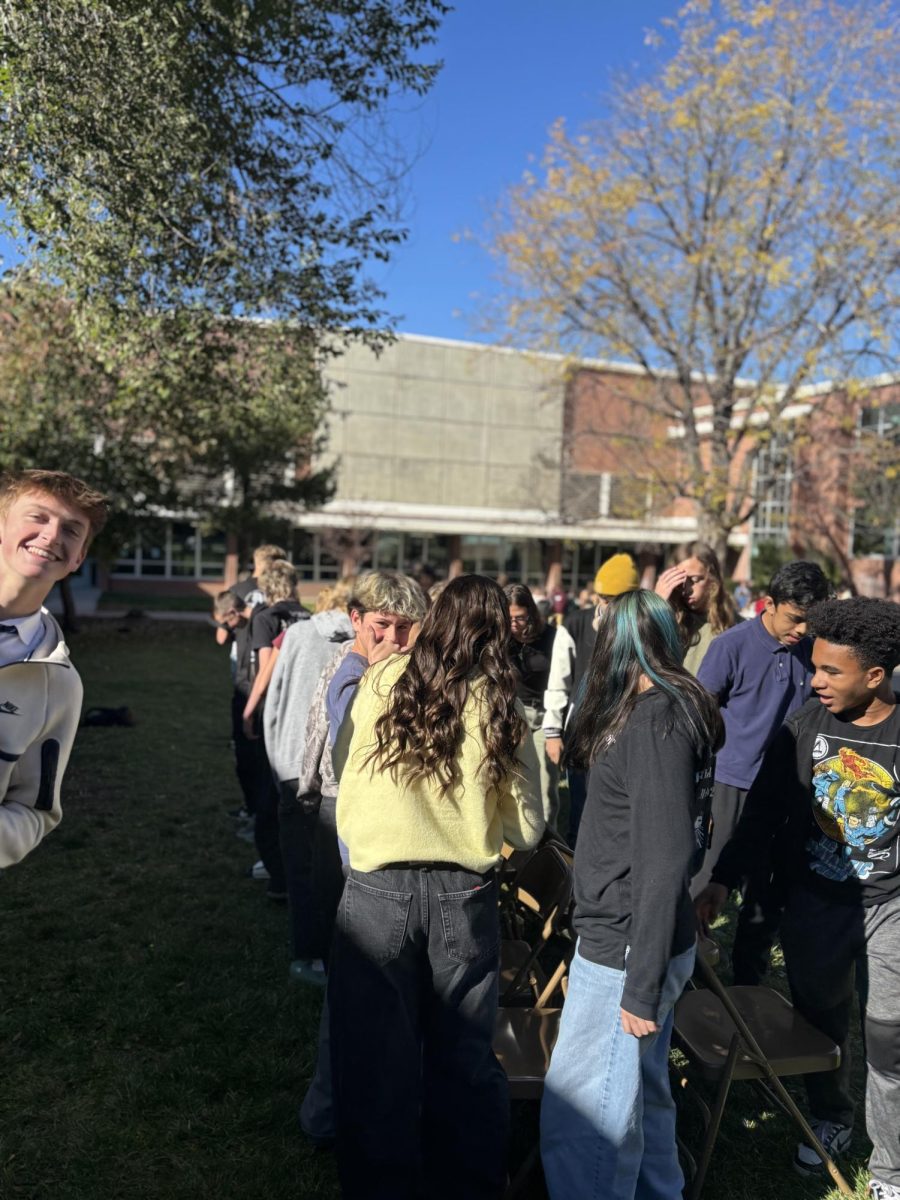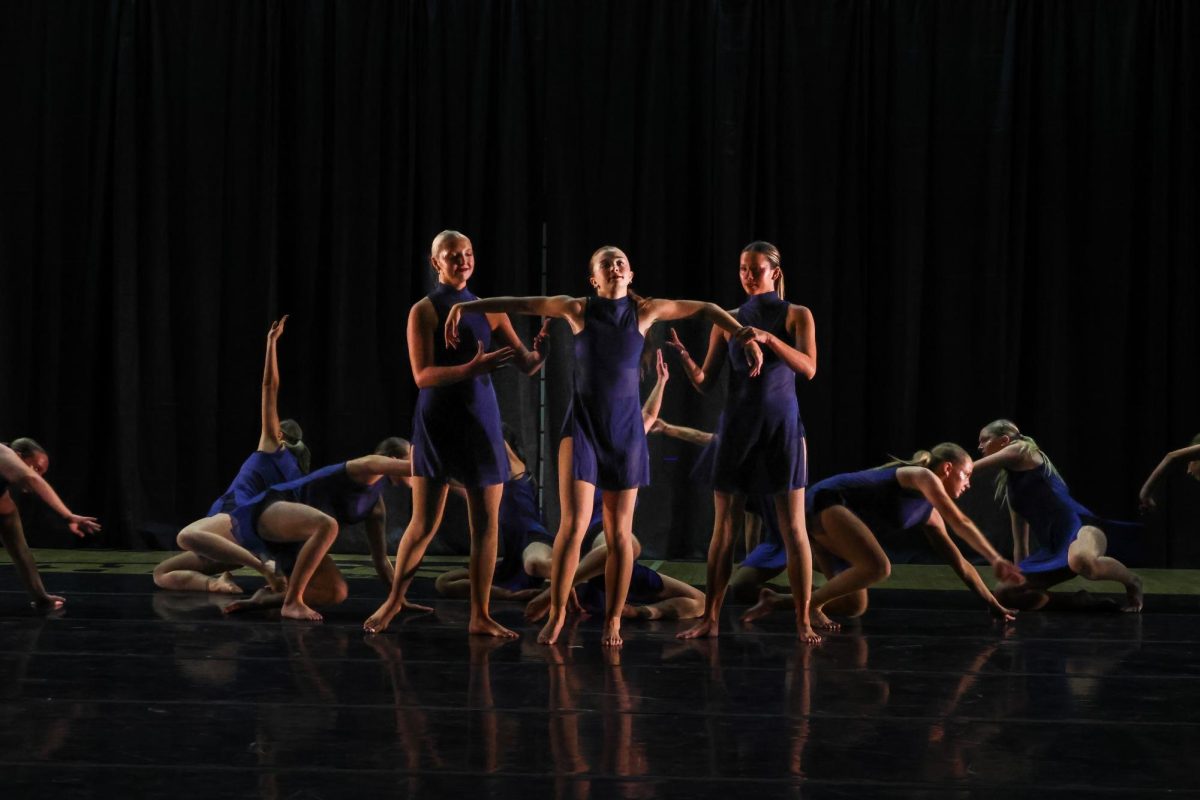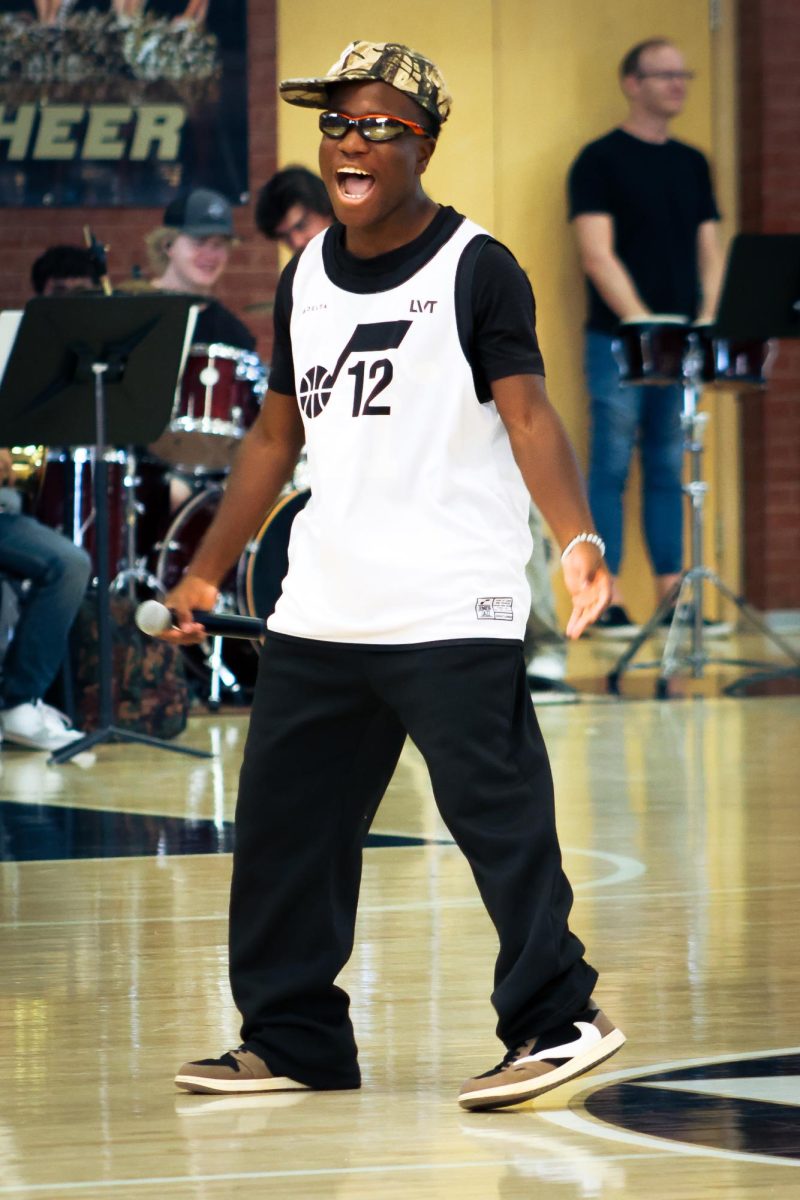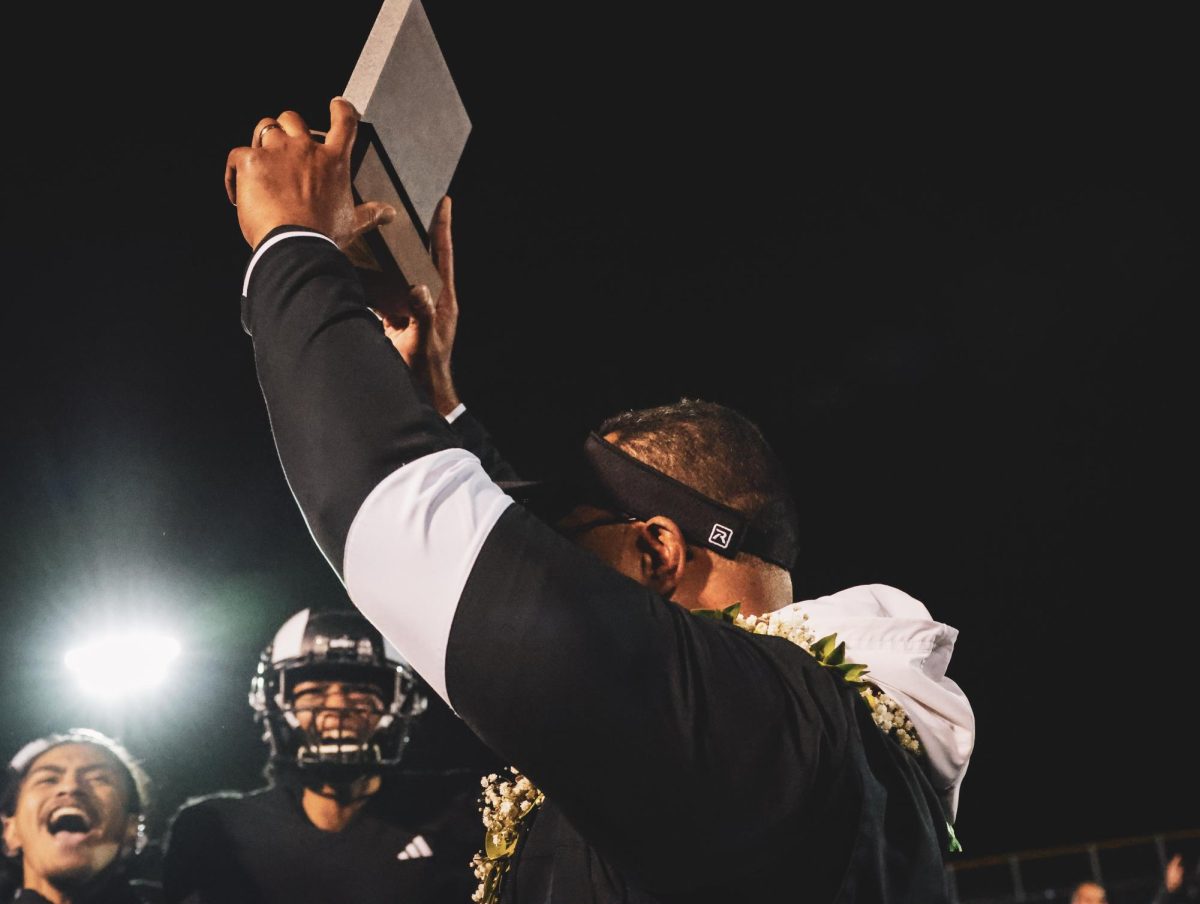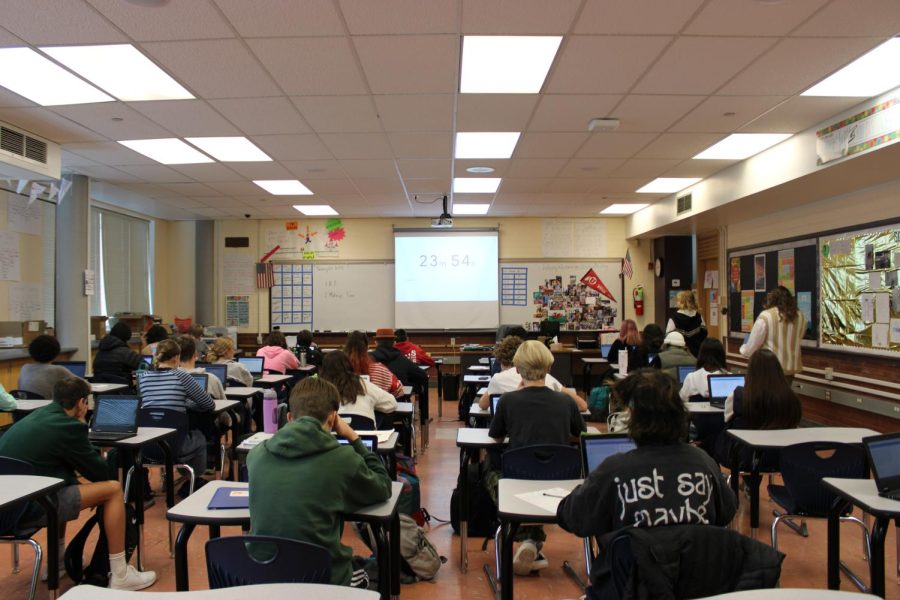Beginning Stages of Highland Feasibility Study Prompt Questions of Cost
Students at Highland do not have outlets to plug in their computers.
January 24, 2023
Not long after the end of World War II, with the dawning of the Cold War and the civil rights movement, came the 1950s. Well before the time of the modern-day computer, students in this era might have been subject to corporal punishment and the idea of elective courses was only just taking on.
Notwithstanding certain cultural adjustments to the way public schools’ function, it is safe to say that a building designed for those politically charged years might lack in infrastructure the progress of society today.
Highland High School, originally built in 1956, is no exception. As Paul Schulte, executive director of auxiliary services for the Salt Lake City School District, stated to the Salt Lake Tribune: [the building] has been pushed to “the end of its life cycle.”
Principal Jeremy Chatterton acknowledged the outdated nature of the building.
“[There has been] some work done on our heating system, but our plumbing and electrical systems are very outdated in terms of what we need for a 21st-century education,” Chatterton said. “We don’t have outlets for kids to plug in their computers, [for example].”
Due to this fallout between the educational scene of 70 years ago and today, a proposal is being made to the Salt Lake School Board to rebuild Highland High and West High – prioritizing safety, infrastructure, and environmental concerns.
However, the proposal is still in its infancy. An architectural firm, Naylor Wentworth & Lund Architects, has been hired to conduct a feasibility study – which will continue through the initial stages of the project.
“The premise of [the feasibility study] is to decide how big of a building we would need, how much square footage we would need, the possibility of building on-site, whether or not students would have to be displaced, and how much it would all cost,” Chatterton said.
The findings of the feasibility study are to be presented to the Board on Tuesday, February 7th. Once the Board becomes aware of the proposal’s implications, they will decide if it will be put on a ballot for the November 2023 election as a bond. If the bond passes in November, then official plans will be put in place.
While the feasibility study waits to be considered by the Board, Chatterton had his own visions for what a new Highland High might look like.
“One of the big areas we’ve talked about [implementing in a new building] is the ability to have a more secure campus,” Chatterton said. “We have a building with a lot of entry and exit points and we want to have a singular entry point with multiple exits.”
This will also make it possible to close certain areas of the school when events are taking place and make monitoring those who enter the building more accessible.
Chatterton also discussed other elements that he believed are important to include in Highland’s building design.
“The Board has made a commitment to be carbon-neutral by 2040, so that would also be a big part of the focus of the new building – making sure we are 100% efficient,” Chatterton said. “We need to design this building in terms of infrastructure to be here for the next 70, 80, or even 100 years.”
Unfortunately, Chatterton was unsure how receptive the public will be to the bond if the Board decides to push it to November’s ballots.
A recent audit conducted by the state found a lack of fiscal responsibility on the part of the SLCSD – particularly regarding the surplus of elementary schools with a lack of enrolled students. With that in mind, another large and seemingly less emergent expense might not be a priority for the community.
Nonetheless, Chatterton emphasized the importance of such a project – in spite of its expenses:
“We really need to make sure that we have a space where students will want to attend,” Chatterton said. “It’s going to be a lot of PR to show that this is something that is important.”
